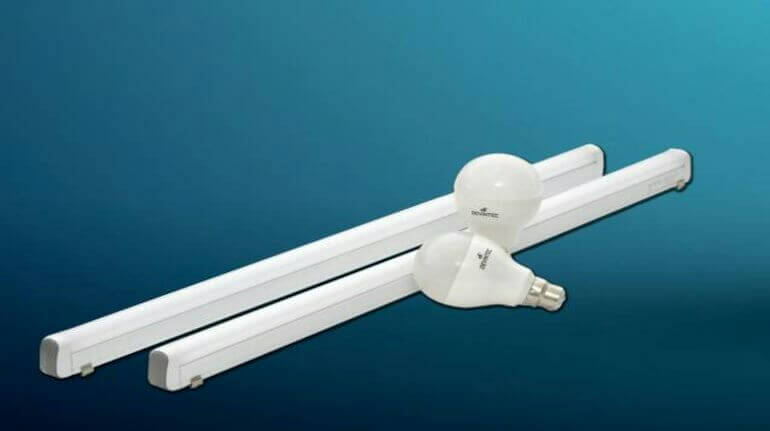You’re hunched over your laptop again.
- Why Everyone’s Suddenly Obsessed with Standing Desks
- Standing Desk Converters: The Quick Fix That Actually Works
- The Good Stuff About Converters
- The Not-So-Good Stuff
- Who Should Get a Converter
- 💖 You Might Also Like
- Full Standing Desks: The Whole Shebang
- The Amazing Parts of Full Standing Desks
- The Painful Parts
- Who Needs a Full Standing Desk
- The Money Talk: What This Will Actually Cost You
- Standing Desk Converters
- Full Standing Desks
- Health Benefits: What Actually Happens to Your Body
- The Good Changes
- The Reality Check
- ✨ More Stories for You
- Setup and Daily Use: What It’s Really Like
- Living with a Converter
- Living with a Full Desk
- Space and Aesthetics: Making Your Office Look Like You Meant It
- Converters in Your Space
- Full Desks in Your Space
- My Personal Experience: Three Years of Standing and Sitting
- 🌟 Don't Miss These Posts
- The Maintenance Reality
- Converters
- Full Desks
- Making Your Decision: The Simple Framework
- The Bottom Line on Standing Desk Converter vs Full Standing Desk
Your back is screaming.
Your neck feels like it’s made of concrete.
And you’re wondering if those standing desk things everyone’s talking about are worth it or just another work-from-home fad.
I get it.
I spent three years working from my kitchen table before I finally admitted my setup was destroying my body.
The standing desk converter vs full standing desk debate isn’t just about furniture.
It’s about whether you want to feel like a human being at the end of your workday or like you got hit by a truck.
Let me break this down for you.
Why Everyone’s Suddenly Obsessed with Standing Desks
The work-from-home revolution changed everything.
One day we’re all in offices with fancy ergonomic setups.
The next day we’re working from bed, kitchen counters, and that wobbly table from college.
Our bodies weren’t built for this.
Sitting for 8+ hours a day is literally killing us.
Studies show it increases your risk of heart disease, diabetes, and early death.
But here’s the thing most people don’t tell you: standing all day isn’t the answer either.
The magic is in the movement.
Switching between sitting and standing throughout the day.
That’s where these two options come in.
Standing Desk Converters: The Quick Fix That Actually Works
A standing desk converter is basically a platform that sits on your existing desk.
You put your monitor and keyboard on it.
When you want to stand, you lift it up.
When you want to sit, you lower it down.
Simple as that.
The Good Stuff About Converters
They’re cheap. Most decent converters cost between $150-$400. Compare that to a full standing desk that can run $600-$2000.
Setup takes 5 minutes. Literally just put it on your desk and you’re done. No assembly required. No tools needed.
You keep your existing desk. That desk you love? The one with all the perfect drawers and storage? You get to keep it.
Perfect for renters. Can’t drill holes in the wall? Don’t want to buy furniture you can’t take with you? Converters are your friend.
Great for testing the waters. Not sure if you’ll actually use a standing desk? Start with a converter. If you hate it, you’re only out a couple hundred bucks.
The Not-So-Good Stuff
Limited workspace. Most converters are smaller than your regular desk. If you need space for multiple monitors, notebooks, coffee, and your collection of pens, you might feel cramped.
They can be wobbly. Cheaper models shake when you type. It’s annoying and makes you feel like your whole setup might collapse.
Height limitations. If you’re really tall or really short, you might not find the perfect height. Most converters have limited adjustment ranges.
They take up desk space even when lowered. Your converter is always there, eating up real estate on your existing desk.
Who Should Get a Converter
You’re perfect for a converter if:
- You’re on a tight budget
- You love your current desk
- You’re not sure about the whole standing thing yet
- You move around a lot (renters, I’m looking at you)
- You have a small workspace
- You want to try before you commit big
💖 You Might Also Like
Full Standing Desks: The Whole Shebang
A full standing desk replaces your entire desk setup.
The whole thing goes up and down.
It’s like having a transformer for furniture.
The Amazing Parts of Full Standing Desks
Tons of workspace. We’re talking 48-72 inches of desk space. Enough room for multiple monitors, speakers, plants, snacks, and whatever else makes your workspace feel like home.
Rock solid stability. Good standing desks don’t shake. They don’t wobble. They feel like they’re bolted to the floor.
Perfect height for everyone. Most full desks adjust from about 24 inches to 50 inches. Whether you’re 5’2″ or 6’8″, you’ll find your sweet spot.
Built-in cable management. No more cable chaos. Most full desks have grommets, trays, and channels to keep everything tidy.
They look professional. If you’re on video calls all day, a full standing desk makes your setup look legit. No more explaining why your monitor is on a stack of books.
Memory presets. Hit a button and it goes to your perfect sitting height. Hit another and it’s at your perfect standing height. No measuring or guessing.
The Painful Parts
They’re expensive. Good ones start around $400 and go up to $2000+. That’s mortgage payment money for some people.
Assembly is a pain. Plan to spend 2-4 hours putting it together. You’ll need tools, patience, and maybe a friend who doesn’t mind holding things.
They’re permanent. Once it’s set up, you’re committed. These things are heavy and not fun to move.
Size matters. Make sure you measure your space. Some of these desks are massive and won’t fit in smaller rooms.
Shipping costs. These things are heavy. Shipping can add $100+ to your total cost.
Who Needs a Full Standing Desk
You’re ready for the full desk if:
- You work from home full-time
- You have the budget for it
- You need lots of workspace
- You’re committed to the standing lifestyle
- You want something that looks professional
- You plan to stay in your current space for a while
The Money Talk: What This Will Actually Cost You
Let’s get real about pricing.
Standing Desk Converters
Budget options: $100-$200 These work, but they’re basic. Limited height adjustment. Might be wobbly. Good for trying it out.
Mid-range: $200-$400 Sweet spot for most people. Better build quality. More adjustment options. Usually include keyboard trays.
Premium: $400-$600 These are solid. Smooth operation. Large work surface. Built to last.
Full Standing Desks
Budget: $300-$500 Manual crank operation. Smaller desktop. Basic but functional.
Mid-range: $500-$1000 Electric motors. Memory presets. Decent size desktop. This is where most people land.
Premium: $1000-$2000+ Commercial grade. Huge desktops. Advanced features. Built like tanks.
Here’s the thing about money: cheap usually costs more in the long run.
I bought a $120 converter first.
It broke after six months.
Then I bought a $300 one that’s still going strong three years later.
Buy once, cry once.
Health Benefits: What Actually Happens to Your Body
This isn’t just about looking cool.
Standing desks actually change how your body feels and functions.
The Good Changes
Your back stops hating you. Less compression on your spine. Better posture naturally happens when you stand.
Energy levels go up. Standing keeps your blood flowing. You feel more alert and focused.
Calories burn faster. Not a ton, but standing burns about 50 more calories per hour than sitting. It adds up over time.
Better mood. Standing releases endorphins. You feel more positive and engaged.
Reduced risk of serious diseases. Less sitting means lower risk of heart disease, diabetes, and certain cancers.
The Reality Check
Standing all day isn’t the goal.
Your feet will hurt.
Your legs will get tired.
The key is alternating between sitting and standing every 30-60 minutes.
Both converters and full desks let you do this.
The difference is how smoothly and quickly you can make the switch.
✨ More Stories for You
Setup and Daily Use: What It’s Really Like
Living with a Converter
Morning routine: lift it up when you feel energetic.
Afternoon slump: lower it down when you need to focus.
The adjustment takes about 10-20 seconds depending on your model.
Some days you’ll use it a lot.
Other days you’ll forget it’s there.
That’s normal.
Living with a Full Desk
Hit your standing preset after lunch.
Hit your sitting preset when you need to do detailed work.
The transition is seamless.
Takes about 15 seconds to move from sitting to standing height.
You develop patterns without thinking about it.
Space and Aesthetics: Making Your Office Look Like You Meant It
Converters in Your Space
They sit on top of your existing desk.
Some look sleek and modern.
Others look like you’re trying to fix a problem (which you are).
If your current desk is beautiful, a converter might ruin the look.
If your current desk is already ugly, a converter won’t make it worse.
Full Desks in Your Space
They become the centerpiece of your office.
Clean lines.
Professional appearance.
Everything built-in and organized.
If you’re on video calls, clients see a professional setup.
Not something cobbled together from Amazon boxes.
My Personal Experience: Three Years of Standing and Sitting
I started with a $150 converter in 2021.
Used it maybe 30% of the time the first month.
Then something clicked.
I realized I felt better on days I stood more.
My afternoon energy crashes disappeared.
My back pain reduced significantly.
After six months, the converter broke.
Plastic parts gave out.
I upgraded to a full electric desk.
Best work-from-home purchase I ever made.
Now I automatically switch positions throughout the day.
Stand during calls.
Sit for detailed work.
Stand for emails and admin tasks.
It’s become natural.
🌟 Don't Miss These Posts
The Maintenance Reality
Converters
Not much to maintain.
Maybe lubricate the lifting mechanism once a year.
Keep the surface clean.
That’s about it.
Full Desks
Electric motors need occasional care.
Check screws and bolts every few months.
Clean the moving parts.
Some brands offer warranties and service.
More complex = more potential problems.
But good brands are reliable.
Making Your Decision: The Simple Framework
Ask yourself these questions:
How much do you actually work from home? If it’s just a few hours a week, get a converter. If it’s full-time, consider the full desk.
What’s your budget look like? Converters give you 80% of the benefits for 30% of the cost. Full desks are an investment in your daily comfort.
How much space do you have? Small space = converter. Dedicated office = full desk.
How committed are you? Not sure if you’ll use it = converter. Ready to change your work life = full desk.
Do you move around a lot? Renters and nomads should stick with converters. Homeowners can go either way.
The Bottom Line on Standing Desk Converter vs Full Standing Desk
Here’s what I wish someone told me three years ago:
Start with a decent converter if you’re unsure.
Use it for six months.
If you love it and use it daily, upgrade to a full desk.
If you rarely use it, you saved yourself $1000+.
Both options will improve your health and energy.
Both will reduce back pain and afternoon fatigue.
The difference is convenience, workspace, and how professional you want to look.
The standing desk converter vs full standing desk choice isn’t about right or wrong.
It’s about matching your needs, budget, and lifestyle.
Your back will thank you either way.





















